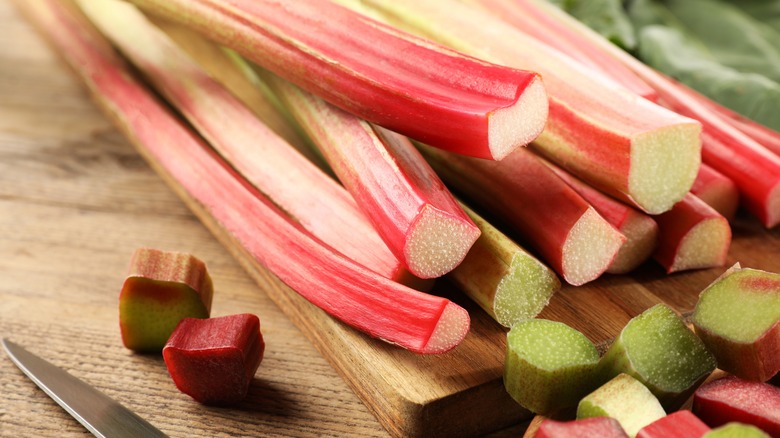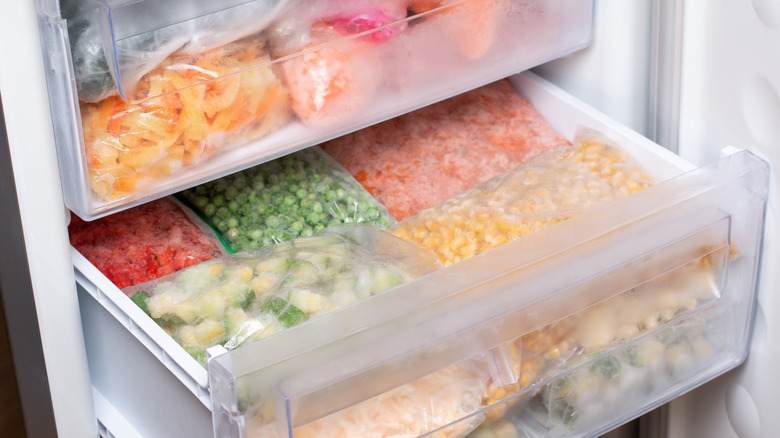The Proper Way To Store Rhubarb In The Fridge
Whether you want to call it a vegetable (since it looks like one) or a fruit (because it's often used in desserts), you can cook with rhubarb for both sweet and savory dishes. Unfortunately, it's quite perishable and will only last a few days if left on the countertop. So, if you have more than you can use immediately, the best place to store rhubarb is in the fridge.
When refrigerating rhubarb, keep it unwashed and trim off both ends of the stalk — the root end is hard and inedible, while the leaves are toxic and, therefore, dangerous to consume. Next, wrap the full-length stalks in a damp cloth or paper towel and stash them in a plastic bag. Poke holes all around the bag or just leave it open to ensure enough air circulation to prevent the build-up of ethylene gas — a plant hormone that speeds up ripening.
Finally, place the wrapped stalks in the crisper drawer of your refrigerator. This drawer is designed to maintain the optimal humidity level, and because of this, it's one of the great ways to keep your vegetables fresher longer. Stored this way, your rhubarb can last up to three weeks. However, note that if you had already cut the stalks into smaller pieces but followed these same steps to refrigerate them, they're likely to last for a shorter period (2-4 days) because the chopped ends increase the surface area susceptible to rot.
Store rhubarb for months (or longer)
If you want to store rhubarb for longer — say a few months — you can pickle them before storing them in the fridge. The good thing about pickling is that it imparts a unique zingy flavor to the plant. With this preservation method, rhubarb can last up to four months. Alternatively, and more commonly, you can freeze rhubarb.
First, prepare the stalks by trimming, washing, and slicing them. Blanch them in boiling water for about a minute, then immediately transfer them to an ice bath to stop the cooking process. Once completely cooled, dry the rhubarb slices and spread them in one layer on a baking sheet. Flash-freeze them until solid. Finally, transfer them to a freezer bag, remove as much air as possible from the bag, then seal and pop them in the freezer. These can last up to one year.
Although freezing preserves rhubarb for the longest time, they're more likely to experience a change in texture. But because most rhubarb recipes involve cooking the vegetable until it's broken down, then the texture is not as much of an issue. You can even cook them straight from frozen. Now, even with proper storage, there's always the chance that your produce may go bad, so it's crucial to be aware of the signs of spoilage. If the stalks become soft, mushy, or develop a slimy texture, toss them. Mold formation or foul smell are also clear signs of spoilage, so discard them.

